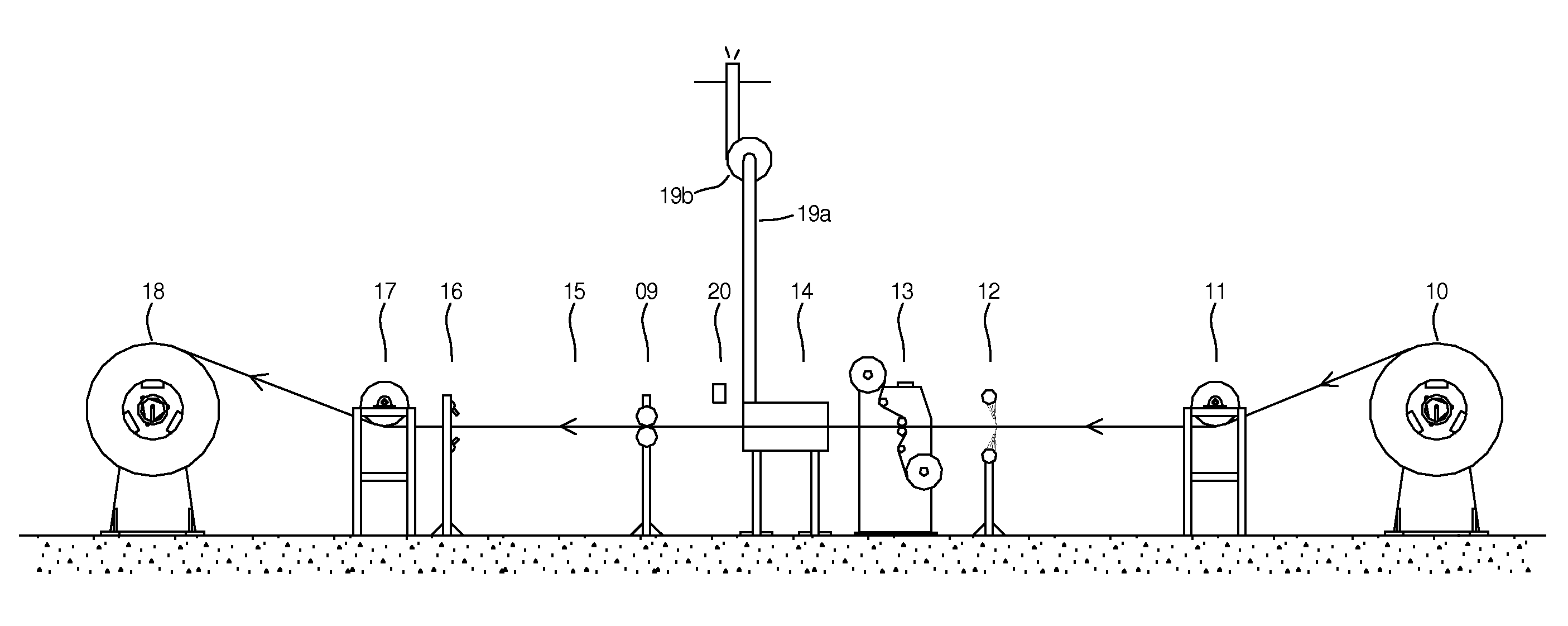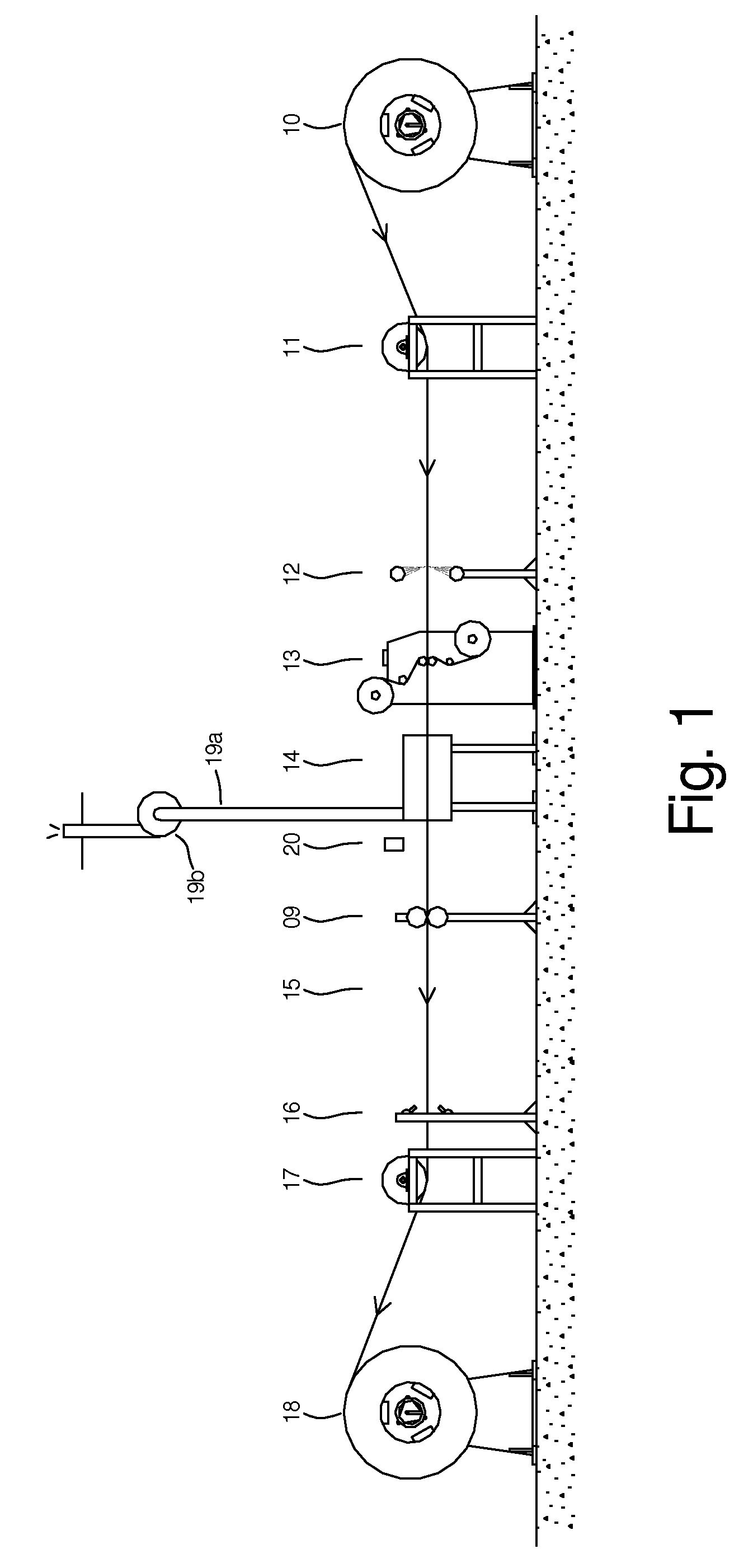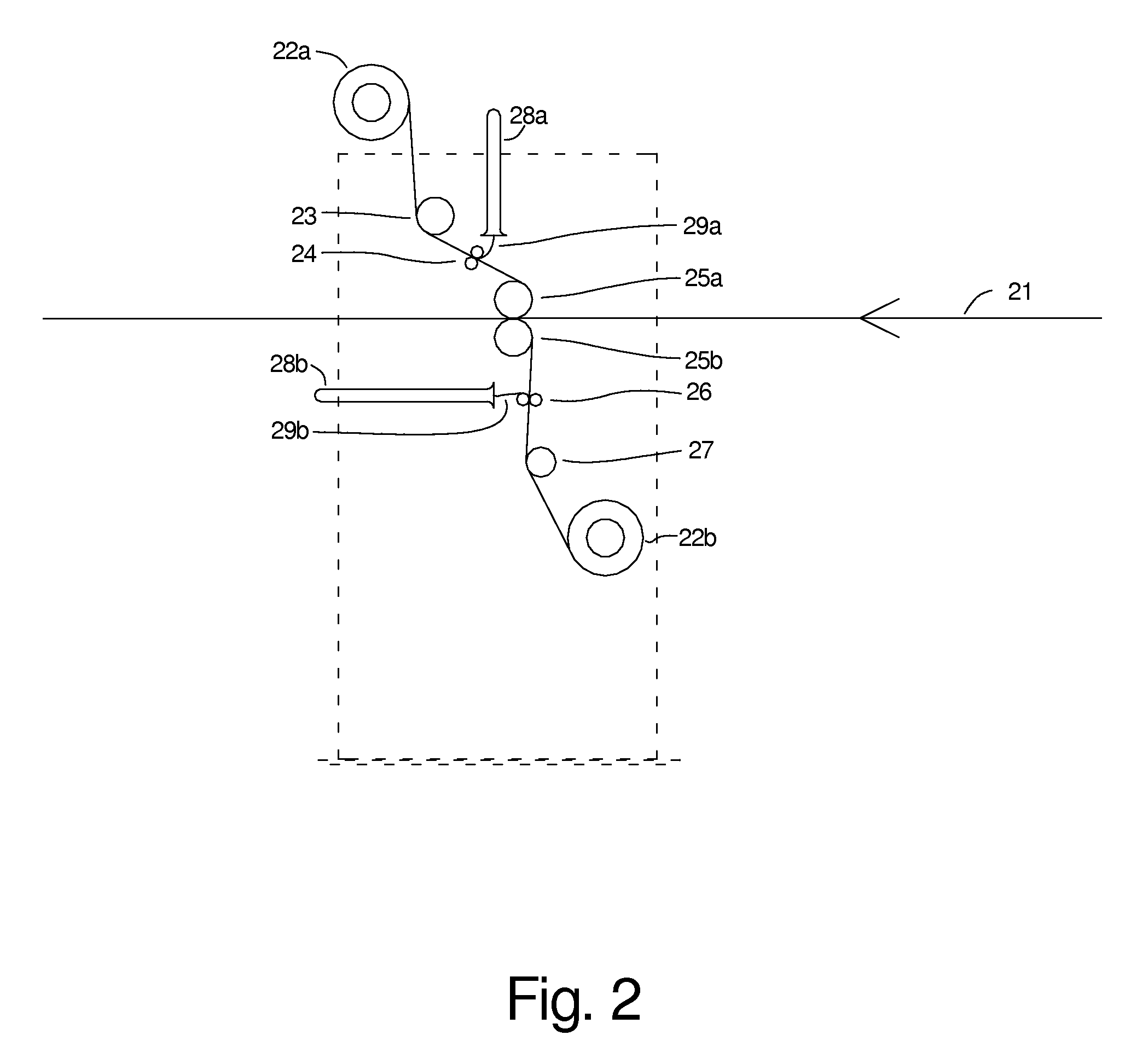Laminating polyester onto metal substrate
a technology of polyester and metal substrate, applied in the direction of synthetic resin layered products, transportation and packaging, packaging, etc., can solve the problems of pencil hardness and toughness properties, lack of crystallinity, and substantial destruction of polyester film crystallinity
- Summary
- Abstract
- Description
- Claims
- Application Information
AI Technical Summary
Benefits of technology
Problems solved by technology
Method used
Image
Examples
example 1
[0115]A metal strip 0.009″ thick galvanized steel was run on a line configured similar to FIG. 1 with the exception that an impinging flame was used as a post treat rather than an induction furnace. A 1.5 mil two layer film was applied comprising: a semi crystalline polyester PBT with a white color, and a tie layer primarily composed of an anhydride-modified ethylene acrylate tie layer. The ratio of the tie layer to the bulk layer was approximately 1:4. The Metal strip was preheated to approximately 300 degrees F. and post treated to between 510-520 degrees F. after lamination. The laminator rolls were heated to 400 degrees F. and the line speed was operated at 20 feet per minute. No forced air cooling was applied to the metal-polymer laminate. After post treating the metal strip stayed molten for approximately 22 seconds, solidified, and then cooled for an additional 9 seconds before contacting the exit deflector roll where the large roll acted as a heat sink and rapidly cooled the...
example 2
[0116]A metal strip 0.010″ thick galvanized steel was run on a line configured as in example 1. A 0.6 mil two layer film was applied to one side of the metal strip comprising: a semi crystalline polyester PBT without color, and a tie layer primarily composed of an anhydride-modified ethylene acrylate tie layer. The ratio of the tie layer to the bulk layer was approximately 3:17. The Metal strip was preheated to approximately 300 degrees F. and post treated to between 440-450 degrees F. after lamination. The laminator rolls were heated to 400 degrees F. and the line speed was operated at 12 feet per minute. No forced air cooling was applied to the metal-polymer laminate. The metal strip exhibited all the desired commercial properties of: adhesion over 43 ounces per inch based on a cross hatch adhesion test (using a 3M 610 tape), bending toughness at a one metal thickness without metal exposure, and a pencil hardness of 2 B. Over 500 feet of continuous steel was run coated 18″ wide wi...
example 3
[0117]A metal strip 0.010″ thick galvanized steel was run on a line configured as in example 1. Two films were applied to the metal strip. A 0.6 mil two layer film was applied to one side of the metal strip comprising: a semi crystalline polyester PBT without color, and a tie layer primarily composed of an anhydride-modified ethylene acrylate tie layer. The ratio of the tie layer to the bulk layer was approximately 3:17. The other side received a 0.6 mil two layer film comprising: a highly crystalline polyester PBT with a white color utilizing TiO2, and a tie layer primarily composed of an anhydride-modified ethylene acrylate tie layer. The ratio of the tie layer to the bulk layer was approximately 3:17. The Metal strip was preheated to approximately 300 degrees F. and post treated to between 440-450 degrees F. after lamination. The laminator rolls were heated to 400 degrees F. and the line speed was operated at 15 feet per minute. The metal-polymer laminate was allowed to air cool....
PUM
| Property | Measurement | Unit |
|---|---|---|
| thick | aaaaa | aaaaa |
| size | aaaaa | aaaaa |
| thick | aaaaa | aaaaa |
Abstract
Description
Claims
Application Information
 Login to View More
Login to View More - R&D
- Intellectual Property
- Life Sciences
- Materials
- Tech Scout
- Unparalleled Data Quality
- Higher Quality Content
- 60% Fewer Hallucinations
Browse by: Latest US Patents, China's latest patents, Technical Efficacy Thesaurus, Application Domain, Technology Topic, Popular Technical Reports.
© 2025 PatSnap. All rights reserved.Legal|Privacy policy|Modern Slavery Act Transparency Statement|Sitemap|About US| Contact US: help@patsnap.com



